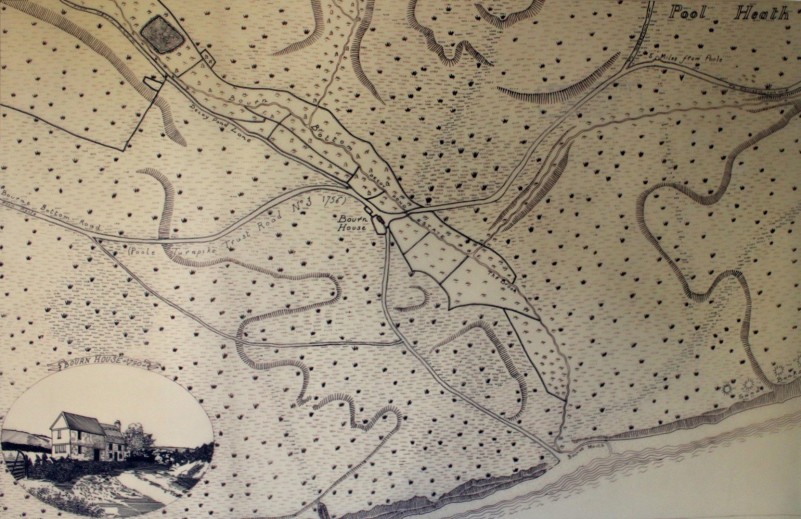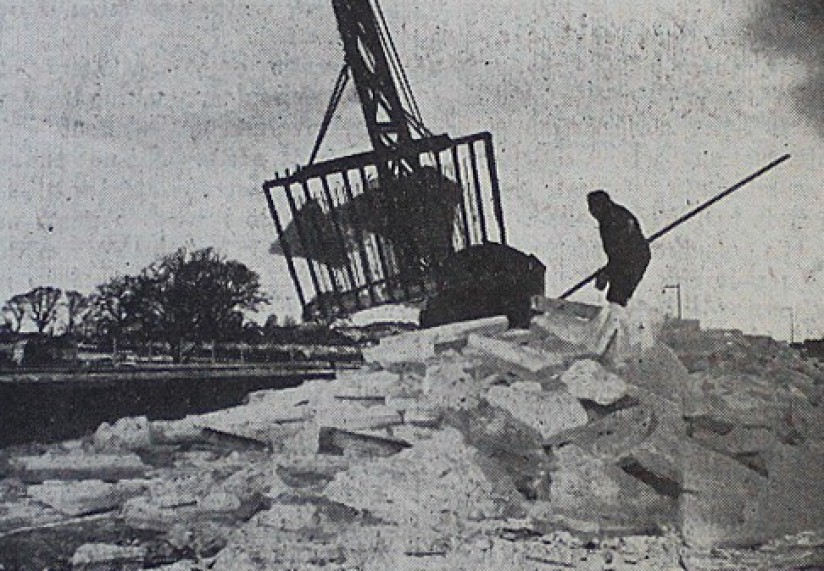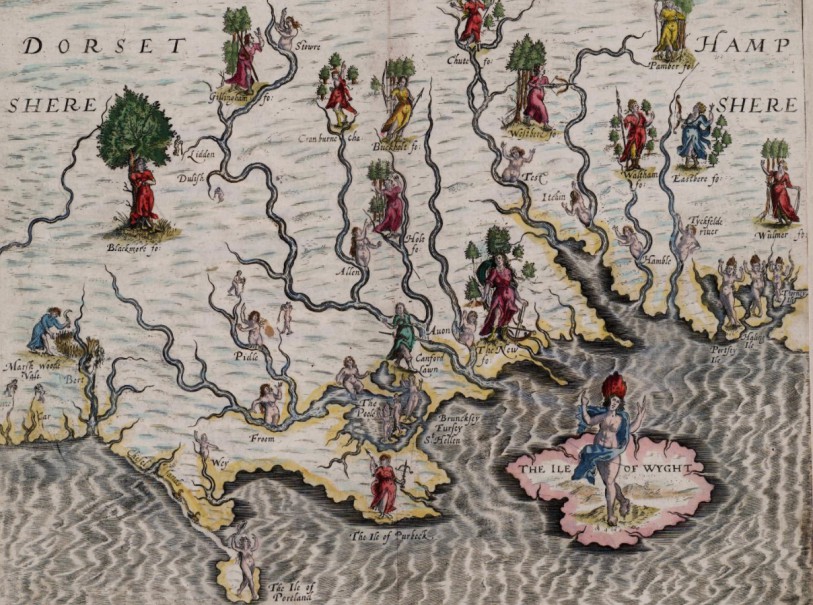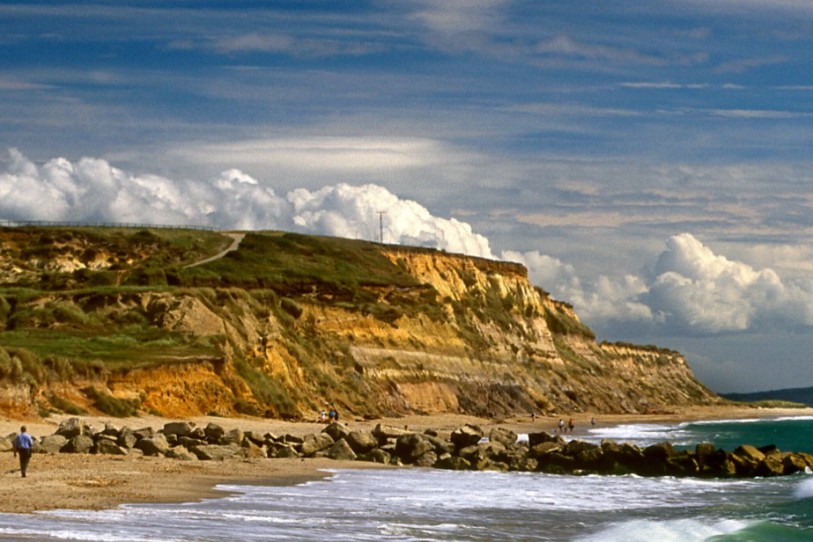CONTENTS
Miscellaneous
A talk about Hengistbury Head
Case against wind power
Early days of Bourne Stream
Anchor ice on the Avon
Fantastical map from 1613
Erosion remnant at eastern tip of Bournemouth
Some more pictures
It is not possible or appropriate to do more than touch on this huge subject which is itself just a small part of the wider argument about world energy. However, the world energy situation does
not in my view provide any justification for wind power.
The background must be that over the last 10,000 years or so human civilisation has developed but without much use of fossil fuels and then only on a small scale. However, since the start of the
industrial revolution in the nineteenth century with its huge use of coal, steam power and steel, the pace has quickened until we now have enormous use of fossil fuels: gas for heating, oil for
transport and coal for electric power. Human inventiveness has gone hand in hand with this sudden ability to make use of these natural resources. Electricity is indeed the immensely important common
denominator of energy without which it is not possible for any country to raise its living standards.
Since electric power is so crucial to everyone, it is worth noting what it enables:
- All engines (steam, gas, petrol). No engines are immune because electricity is needed for their manufacture.
- All industries from heavy to light. Nothing can be made without a proper electrcity supply for power, light, heating. Heating cannot be provided without electricity to pump the gas and run the
boilers.
- Hospitals, schools, road maintenance, the building industry.
- Transport by cars, aircraft and ships.
- Retailing including computers.
- Essential services including telephones, TV, water, gas, electricity of course, sewerage.
The reliance we all have on electricity is so great that it is hard to think of anything which does not need it. Unless that is one is prepared to return to the primitive tribal conditions of
pre-history, conditions which still prevail in parts of the Third World.
It is no exaggeration to say that a reliable, reasonably cheap and flexible electricity supply is absolutely essential for prosperity and development. Fossil fuels have provided these needs for
many years but are now under attack on the grounds that they cause runaway global warming, as renamed more recently, "climate change." This industry or "environmental movement" comprises green
policies as supported by the UNFCC and the UN's IPCC and is well beyond the scope of my short note on wind power. However, I would mention that there is no evidence that global temperatures are
increasing at a dangerous rate due to man-made emissions of carbon dioxide (CO2) from fossil fuel burning.
More important is that the trillions of public money already spent by the world on "tackling climate change" has had no discernible effect on its objective of curbing CO2 emissions. This is
evidenced by the fact that CO2 continues to increase despite all the green policies designed to slow it down. The increase could well be due to natural factors anyway because these cause about 97% of
CO2 emissions in the first place. If man's attempts to curb emissions are only acting upon the 3% of total emissions, it would be surprising if such attempts affected the outcome.
It should be remembered that CO2 is not a pollutant but a benefit to the world and that the increase of this trace gas from 280 parts per million (ppm) in the nineteenth century to about 400 ppm
today has done nothing but good. It has reportedly added the equivalent of another continent to the planet in terms of increased greenery and all that means for better crop yields to feed the
world.
Yet even if the curbing idea is felt to be a good one, it is still a nonsense because the world is not actually curbing the emissions. We know this because the world emissions can be assessed by
looking at the new sources of fossl fuel coming on stream every year. It is a steep graph line with China and India leading the way with hundreds of new coal-fired power stations. Why therefore
should any country try to change over from effective fossil fuels to ineffective renewable energy if world CO2 emissions are continuing to climb steeply?
Wind power is ineffective because it:
- costs about three times as much as conventionial electricity generated from fossil fuels
- is unreliable often producing virtually NIL power when there is little wind over the whole country
- cannot be ramped up to meet demand
If the world can spare trillions of public money, I think it better to do that relieving poverty, saving lives and enabling poorer countries to develop and improve their prosperity.
The 1790 Bourne Stream (or Bourn Bottom) in what is now the town
centre
Although the town is relatively new, it remains rather surprising that it has been named after such a very narrow
stream.
When founded as a watering place by Lewis Tregonwell in 1810, there was little to be seen except for a turnpike road,
smugglers’ tracks, Bourn House (a smugglers’ inn) and the stream with its marshy land that was used for duck shooting.
The word “bourn” variously means a boundary, a destination or a stream. Obviously, Bournemouth is named after the
mouth of the Bourne Stream as appreciated by the cartographer of Henry VIII in 1539 when it was noted, in translation from the Old English that “from Christchurch to Bournemouth is seven
miles…”
RIVER THAT FREEZES THE WRONG WAY ROUND
1954 freeze-up at the Knapp Mill water inlet.
Although known as the Hampshire Avon, this part is in Christchurch Dorset and
remarkable for sometimes forming ice on the river bed.
Here, an ice dredger is being used to battle the huge amount of this “ground ice” which has floated to the surface
and piled up, so putting the water supply at risk.
It is the only known river in the country affected in this way. The cause is a combination of very specific
conditions:
- Severe cold spell with water temperature at freezing point which is only possible when night temperature falls to
20 degrees F.
- Turbulence sufficient to keep all the water at freezing point.
- Gravel river bed which promotes radiation of heat.
- Lack of cloud so enabling penetrating frost.
- No trees overhanging the river bank.
THANK GOODNESS FOR THE ORDNANCE SURVEY
Here is a really old map of Hampshire, Dorset and the Isle of Wight by Michael Drayton, poet. It is a copper plate
engraving and perhaps best described as fantastical.
Apart from showing some rivers, the map is decorated with goddesses and allegorical figures for forests and
islands.
Although there is no real topographical value, it is of interest for its classic allusions which are reminiscent of
contemporary poetry and masques. That said, the Stour, Piddle and Frome look in roughly the right places.
RIVER TERRACES AT HENGISTBURY HEAD
It may be difficult to imagine the causes, but there are two river terraces at the headland.
Rather like the Avon River valley which regularly floods today, the very top of Hengistbury Head used to flood from a nearby river which has long since disappeared. The same applies to the second
terrace which can be seen on the right of the photograph as fairly level and nearer to Long Groyne.
A terrace is an area of “high and dry land” which previously flooded when the course of the adjoining river was much
higher. After the river has down-cut to a lower level, a new, lower flood plain will form, becoming in its turn a new lower terrace.
Since the whole of the existing headland is an erosion remnant, we can easily see the differences in the terrace
levels from the beach. Two major causes of such high-level terraces are the great changes in sea level and the instability of the Earth’s crust in pre-history.







